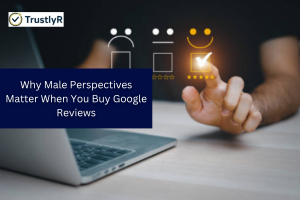Data Science for Audience Segmentation and Personalization in Internet Marketing

Introduction
Think of internet marketing as hosting an enormous dinner party. Guests arrive with unique tastes—some crave spicy dishes, others prefer mild flavours, and a few are here only for dessert. If you serve the same plate to everyone, half the table leaves unsatisfied. But if you anticipate their preferences and tailor each plate, the evening becomes unforgettable. This metaphor captures the essence of audience segmentation and personalization—crafting experiences that resonate individually while operating on a massive scale. Data science is the chef behind this orchestration, using ingredients of data to prepare personalized offerings.
The Power of Segmentation: Finding Patterns in the Crowd
Imagine standing on Bangalore’s MG Road during rush hour. The traffic looks chaotic—cars, buses, and scooters weaving unpredictably. Yet, zoom out, and patterns emerge: office-goers hurrying home, students leaving classes, vendors finishing their day. In digital marketing, audience data feels equally noisy until data science tools organise it into coherent clusters.
Segmentation techniques such as clustering algorithms or demographic profiling help marketers divide vast, indistinct audiences into meaningful groups. Whether by geography, buying behaviour, or lifestyle preferences, data turns random traffic into organised lanes of insight. Students enrolled in an Internet Marketing course in Bangalore learn how Python, R, and machine learning can uncover these segments, transforming guesswork into strategy.
Personalization: Crafting Messages Like a Tailor
A skilled tailor never uses the same pattern for two clients. Each measurement, fabric choice, and stitch reflects the individuality of the wearer. Personalization in marketing works the same way. Once segments are defined, campaigns can be adjusted to fit—emails that address specific concerns, product recommendations based on browsing history, or social ads aligned with a user’s interests.
Consider a fitness app: one user receives reminders about running shoes while another gets suggestions for meditation classes. Both feel understood, not marketed to. Learners in an Internet Marketing course in Bangalore explore how algorithms fuel this level of personalization, teaching them to design digital experiences that feel hand-stitched for every user.
Data Pipelines: The Engine Room of Insights
Behind the polished storefront of personalization lies the engine room: data pipelines. Think of them as the aqueducts of ancient Rome, moving water from distant sources to bustling cities. Without sturdy channels, the city would dry up; without robust pipelines, marketing systems collapse.
Data pipelines collect information from web analytics, CRM platforms, social media, and transaction histories. Once cleaned and processed, this data becomes fuel for advanced analytics. Real-time dashboards reveal shifts in consumer sentiment, while predictive models anticipate behaviour before it happens. For aspiring professionals, mastering these behind-the-scenes flows is critical. Courses emphasise not just visualisation, but the engineering discipline required to keep insights flowing uninterrupted.
Storytelling with Data: Turning Numbers into Narratives
Numbers alone rarely inspire action. It is their translation into stories that moves decision-makers. Consider a brand discovering that young urban professionals purchase late at night while suburban families shop on weekends. Presenting this merely as a spreadsheet is forgettable; narrating it as two distinct lifestyles makes it actionable.
Data storytelling blends analytics with empathy. It teaches marketers to interpret segments not as rows of numbers, but as living groups with needs, struggles, and aspirations. Through dashboards, visualisations, and case studies, learners sharpen their ability to speak both the language of data and the language of human motivation.
The Competitive Edge in Bangalore’s Digital Arena
Bangalore’s digital ecosystem is fiercely competitive. Startups, established IT firms, and e-commerce giants all vie for attention in the same crowded online space. Audience segmentation and personalization are no longer “nice-to-have” strategies—they are survival tools. Companies that master them achieve not just clicks, but loyalty.
Training programmes in the city emphasise practical exposure to case studies from local industries such as fintech, retail, and edtech. By practising on live projects, learners see how theory transforms into measurable results. This alignment between classroom learning and market reality ensures graduates don’t just understand data—they wield it effectively.
Conclusion
Audience segmentation and personalization are the twin pillars of modern marketing effectiveness. Through the metaphor of the dinner party, the tailor, and the aqueduct, we see that data science brings precision and humanity into campaigns that might otherwise be generic. By learning these skills in Bangalore’s thriving tech hub, future marketers gain both the technical and strategic edge to thrive in a crowded marketplace.
In an era where consumers expect to be understood rather than targeted, those who master data-driven personalization will define the future of digital engagement. For professionals and students alike, diving into an Internet Marketing course in Bangalore is not just an academic step—it is an investment in becoming the architect of meaningful, personalized digital experiences.




